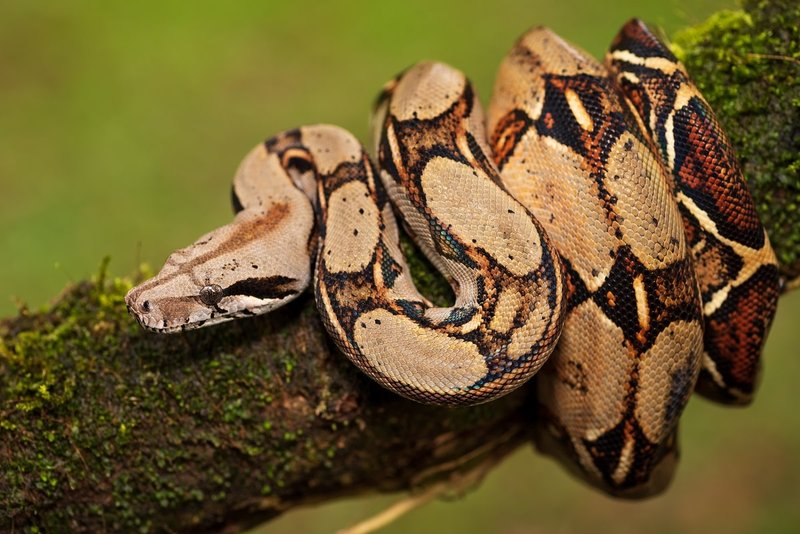
These clever reptiles have developed characteristics that allow them to thrive in various ecosystems, from rainforests to arid regions. If you’re curious about how they’ve managed to stick around for so long, you’re in for a treat! Today, we’re diving into the unique adaptations that help the boa constrictor flourish.
Camouflage: Blending In With the Environment
One of the most striking features of the boa constrictor is its stunning coloration. These snakes sport a variety of earthy tones—browns, tans, and even a bit of green. This combination isn’t just for show; it helps them blend seamlessly into their surroundings. Picture a leaf falling through the forest. It’s nearly invisible against the backdrop of twigs and branches—this is exactly what a boa constrictor does!
The ability to camouflage allows them to remain undetected by both their prey and potential predators. A boa can lie quietly on a branch, waiting for a small mammal or bird to pass by, completely hidden from view. Here’s the thing: without this adaptation, they would be easy targets.
Additionally, this snake’s scales play a vital role in its disguise. The patterns on their skin help break up their outline, making it even harder for anyone to spot them. This way of hiding not only aids in hunting but also enhances their safety in the wild.
Constriction: A Unique Hunting Technique
Another fascinating adaptation of the boa constrictor is its method of hunting. Unlike some snakes that inject venom to subdue their prey, boas rely on a technique known as constriction. When they catch their meal, typically small mammals or birds, they wrap their bodies around it and squeeze.
You might be wondering how that works. The boa constrictor doesn’t crush its prey; instead, it tightens its grip each time the prey exhales. This means that the animal can’t breathe, eventually leading to its demise. It’s like a slow dance, where the boa maintains control until its food is incapacitated.
This adaptation not only showcases their strength but is also energy-efficient. Instead of waiting for venom to take effect, they can quickly secure a meal. This ability to wrap around and control their prey makes them formidable hunters in their environment.
Temperature Regulation: Mastering the Heat
Boa constrictors are ectothermic, which means they rely on external heat sources to regulate their body temperature. In practice, this means they often bask in the sun or seek shade. Imagine being a lizard sunbathing on a rock; that’s similar to what boas do to warm up or cool down.
This adaptation helps them save energy, as they don’t need to generate heat internally. By adjusting their positions based on the temperature, they can maintain the perfect body heat for hunting and digestion. For instance, after a big meal, they might choose a warm spot to help speed up the digestion process.
While some other snakes might venture into colder climates, the boa prefers warmer locales, ensuring that their environment supports their temperature needs. This way, they can remain active without burning too much energy.
Impressive Sense of Smell: A Key Survival Tool
Another remarkable adaptation of the boa constrictor is its acute sense of smell, which they use to detect prey and predators. They have a specialized organ called the Jacobson’s organ located on the roof of their mouth. When they flick their tongues, they pick up scent particles from the air and deliver them straight to this organ.
This is where the magic happens. The boa constrictor can track prey by following scents through their environment. It’s a bit like following a trail of cookie crumbs to find a hidden treat!
This incredible sense of smell helps them locate food, find mates, and avoid danger. In the dense jungles where they live, being able to sniff out potential threats can mean the difference between life and death. The boa’s keen olfactory sense is indeed a key part of its survival toolkit.
Slow Metabolism: A Survival Advantage
You might be surprised to learn that boa constrictors have relatively slow metabolisms. This means they don’t need to eat as frequently as some other predators. While some snakes might need a meal every few days, a boa can go weeks or even months between meals!
This slow metabolism is beneficial for several reasons. In the wild, prey can be scarce at times. By requiring less food, boas can survive longer without hunting. Imagine stocking up for the winter—this is how boas can endure periods of food scarcity.
Additionally, when they do eat, they can consume large prey items relative to their size. A single meal can sustain them for a long time, giving them a significant advantage in environments where food is unpredictable.
Flexibility and Strength: A Physical Advantage
Last but not least, the physical shape of the boa constrictor is another key to its survival. These snakes are extremely flexible, which allows them to navigate through trees, rocks, and other obstacles in their environment. They can coil around branches or squeeze into tight spaces to ambush prey or escape danger.
Their strength is also impressive. A boa can wrap its powerful body around its prey, showcasing not just strength but also dexterity. This combination of flexibility and power allows them to hunt effectively in various terrains, from dense forests to rocky areas.
Being able to maneuver well means they can adapt to different environments. Whether climbing high in the canopy or slithering through grass, boa constrictors can thrive in many settings.
In nature, survival often hinges on adaptability. The boa constrictor is a prime example of how certain traits can help a species not just survive but thrive. From their incredible camouflage to their unique hunting techniques, each adaptation plays a vital role in their success.
The world of the boa constrictor is a rich tapestry of survival strategies. Understanding these adaptations reminds us of nature’s ingenuity and resilience. So the next time you hear about these remarkable snakes, you’ll know they’re not just surviving—they’re thriving in their environments!

